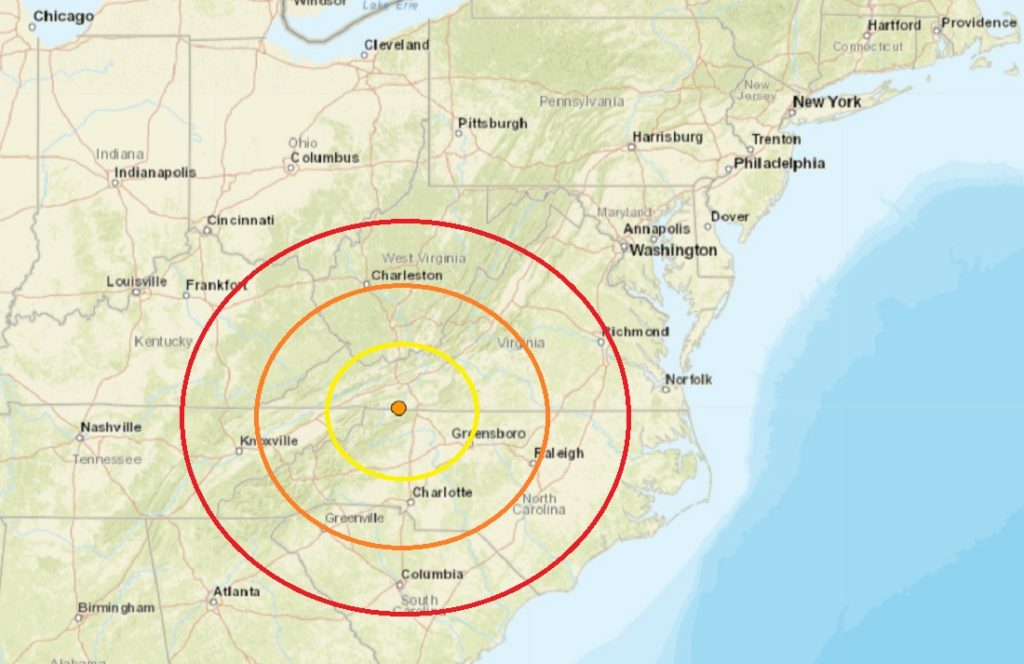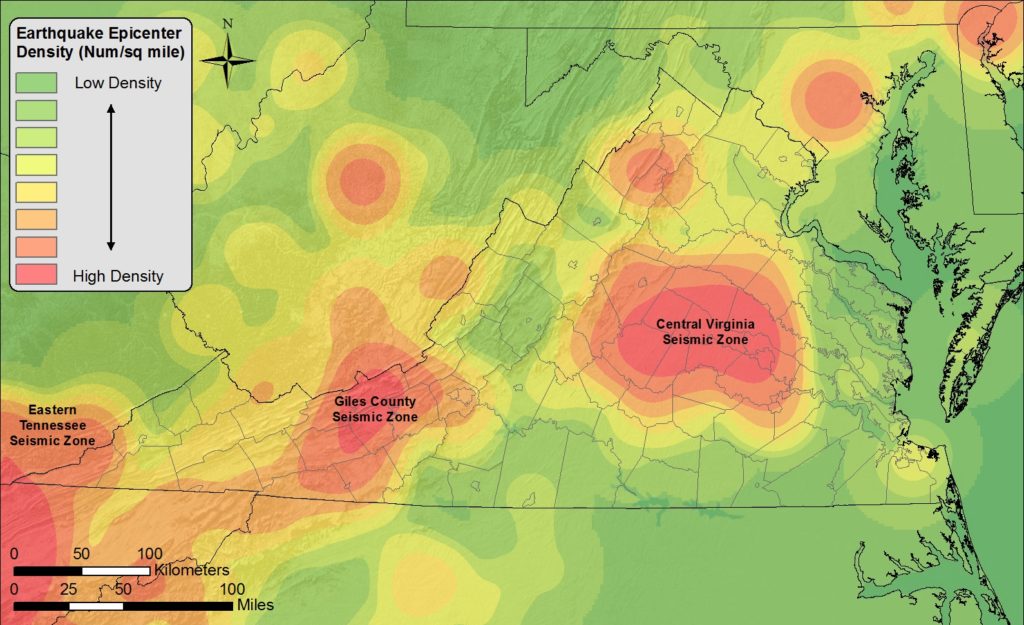
Just before 5:30 am local time this morning, a mild earthquake rattled southwestern Virginia near the North Carolina border. According to USGS, the magnitude 2.6 event struck at 5:25 am at a depth of 2.8 km. Out of an abundance of caution, Independence Elementary School and Grayson County Schools were closed today to survey any earthquake damage.
In 2020, after a magnitude 5.1 event struck the region in August, three local schools suffered damage from that earthquake. Independence Elementary School experienced the most damage then and structural engineers were to make sure today’s earthquake didn’t add more concerns to the buildings in the district.
Superintendent Kelly Wilmore told reporters that there is no evidence of damage so far from today’s earthquake, adding that they also assessed areas that were damaged from the 2020 earthquake as well.
Residents in the region came to social media to describe the shaking sensation they felt along with a loud boom they heard. Some thought an explosion struck the area rather than an earthquake at first.
This was the second earthquake to strike Virginia this month. A magnitude 2.4 earthquake rattled the region just northwest of Richmond on October 12, with many residents reporting they felt substantial shaking in that event.
Virginia doesn’t have much seismic activity but earthquakes can occur here from time to time. According to the Virginia Tech Seismological Observatory, Virginia has had over 160 earthquakes since 1977 of which 16% were felt. This equates to an average of one earthquake occurring every month with two felt each year. According to USGS, this was the second earthquake of the last 30 days and the 35th earthquake in the last full year.
Virginia can get damaging earthquakes too. The strongest in modern times was the magnitude 5.8 earthquake that struck near Mineral, Virginia, on August 23, 2011. That seismic event was widely felt–from Maine to Georgia, west to Cincinnati, Cleveland, and Chicago, and southeastern Canada–over a broad area inhabited by one-third of the U.S. population. When the earth stopped shaking, more than 148,000 people reported their experience of the earthquake on the USGS website. The total economic losses from the earthquake were about $200−300 million, which included millions of dollars in damage to the National Cathedral, the Armed Forces Retirement Home, and the Washington Monument in Washington D.C., as well as minor to major damage to almost 600 residential properties. It was the largest and most damaging earthquake in the eastern United States since the 1886 Charleston, South Carolina earthquake. Damage in the epicentral area represents Modified Mercalli intensity VIII, with many instances of broken and collapsed masonry walls and chimneys, as well as shifting of structures on their foundations. Significant damage occurred to structures at distances in excess of 80 miles to the northeast in the Washington DC area. The rupture process was a complex reverse fault event, initiating at a depth of 8 km.

The Virginia Department of Emergency Management provided funding through the FEMA Hazard Mitigation Grant program to reduce the impact of future earthquakes in 2017. As part of that project, geoscientists with Virginia Energy worked in collaboration with USGS, Virginia Tech, and the College of William and Mary to study and compile evidence of modern and prehistoric earthquakes. Results, when paired with cultural and infrastructure data, aid emergency management and planning agencies to identify and mitigate hazards from future earthquakes.